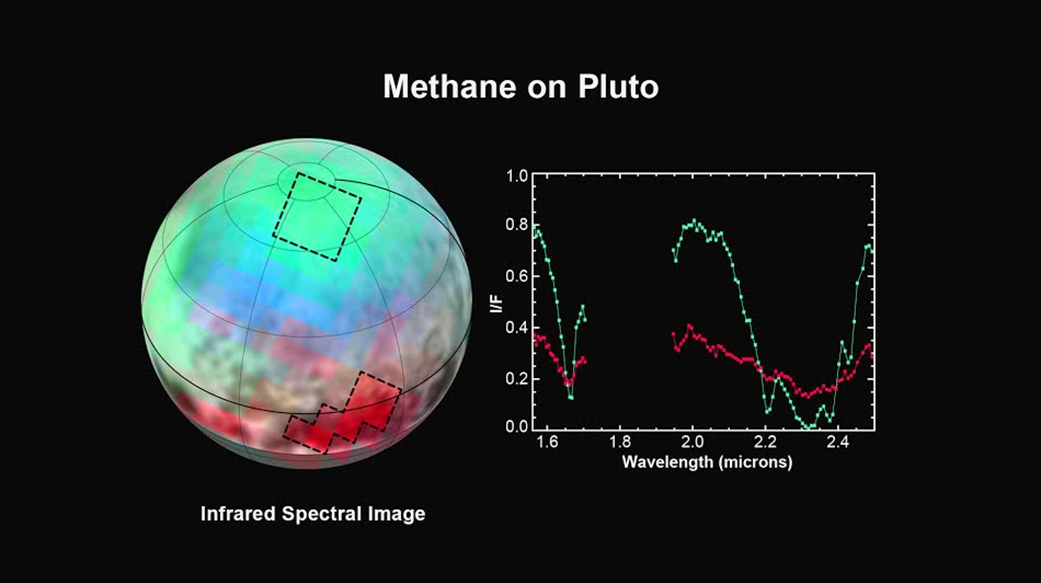First let's look at what the team were able to say -and show - about the largest moon, Charon:
 |
| Above: Charon, seen up close for the very first time in our solar systems 4.5 billion year history. Courtesy of NASA |
Charon's dark northern region (known informally as 'Mordor'), seems to be covered in a thin layer of dark material - although why it's gathered around Charon's north pole isn't clear. Massive cliffs stretch for hundreds of kilometres, and on the upper right a chasm perhaps nine kilometres deep can be seen. The surface has very few craters, just a few here and there. It all suggests a world whose crust has been cracked open by immense internal forces, and had its surface covered over by material welling up from deep inside - and in the (geologically) recent past. On earth that would mean volcanoes of molten rock. On an ice world like Charon that means cryolava - a mixture of liquid water and other low temperature materials, like nitrogen and ammonia. It might imply the existence of an ocean buried deep beneath Charon's crust....
On to Pluto:
First a name for the dark plain on Pluto that tickled me, as it refers to a character from one of my favourite horror stories: Cthlhu Regio. Plutonian mountains, 3500 meters high and probably made of water ice (based on how strong they must be to get so tall), have been found. But they're covered in nitrogen and methane ice - and almost no craters are on them, so they are geologically young, 100 million years old or less.
Above: A video showing where the newly discovered mountains lie on Pluto. Courtesy of NASA.
| Above: The mountains seen with a scale bar, and showing one of the huge pits in the surface. Courtesy of NASA. |
Pluto also has huge, oddly puckered, dimples in the surface. We have no idea what they are, but here's one idea:Alan Stern and Keisi Singer have had a paper accepted today where they argue that the nitrogen on Pluto - both atmospheric and surface ice - might need an internal source to sustain them... so perhaps these are the sites of huge vents, or cryovolcanoes. Saturn's moon, Enceladus....
 |
| Above: Strength of the methane signal on Pluto. Green is more, red less. Courtesy of NASA. |
| Above: Enceladus' south polar region.Or possibly a monstrous brain... nah? Courtesy of NASA |
1. Radioactive heat... (All bodies generally have radioactive materials in their deep interiors)
2. Body could probably store heat of formation for a really long period of time. Maybe there's an ocean (implied sub-surface) that's freezing and the heat released from it, is melting the crust..
There's a lot more data to come; New Horizons will be downloading for months yet. The other sensors may well have been able to detect organic molecules, Methane, Ethane, Propane, polycylic hydrocarbons etc. It's not a given yet that either Pluto or Charon do have internal oceans, but there's clearly some source of geological energy!
There will be another conference to reveal more of the data that is streaming down on Friday - but until then you can watch the whole of today's conference here.
I think I'm justified in saying that with New Horizons at Pluto, Dawn at Ceres, Rosetta/ Philae at comet 67/P, Cassini at Saturn, Orbiters and Rovers at Mars, and other craft on their way to worlds like Jupiter... it's a really good time to be a space exploration geek!
No comments:
Post a Comment